Chiho Aoshima spoke to Fräulein about her personal journey from a once shy, conforming girl to one of Japan’s most famous contemporary artists.
CHIHO AOSHIMA: THE JOY OF NOT FITTING IN
What to do when you feel like you don’t fit into the role assigned to you? When it seems like people around you don’t see your true potential? You could conform to their expectations and stick to safe paths. But you will certainly be frustrated. And who knows where quiet, deep-seated frustration can lead? Alternatively, you could dare to break free from established rules. In your own unique way. Because rebels come in various forms.
Chiho Aoshima, born in Tokyo in 1974, is one such rebel. From a once shy, conforming girl, she has become one of Japan’s most famous contemporary artists.
“I realized I couldn’t pretend to be someone I wasn’t anymore.“
Chiho Aoshima’s surreal and dreamlike creations merge traditional Japanese aesthetics with modern digital techniques, exploring the duality of utopia/dystopia, nature/technology, natural/artificial.
Throughout her career, Aoshima has experimented with various mediums, including digital prints, sculpture, and immersive installations. Her otherworldly figures and fantastical landscapes are reminiscent of Japanese folklore and manga culture. Playful and often humorous, belying melancholy and darkness, they invite viewers into whimsical realms that can only spring from a mind that thinks in entirely unique ways.
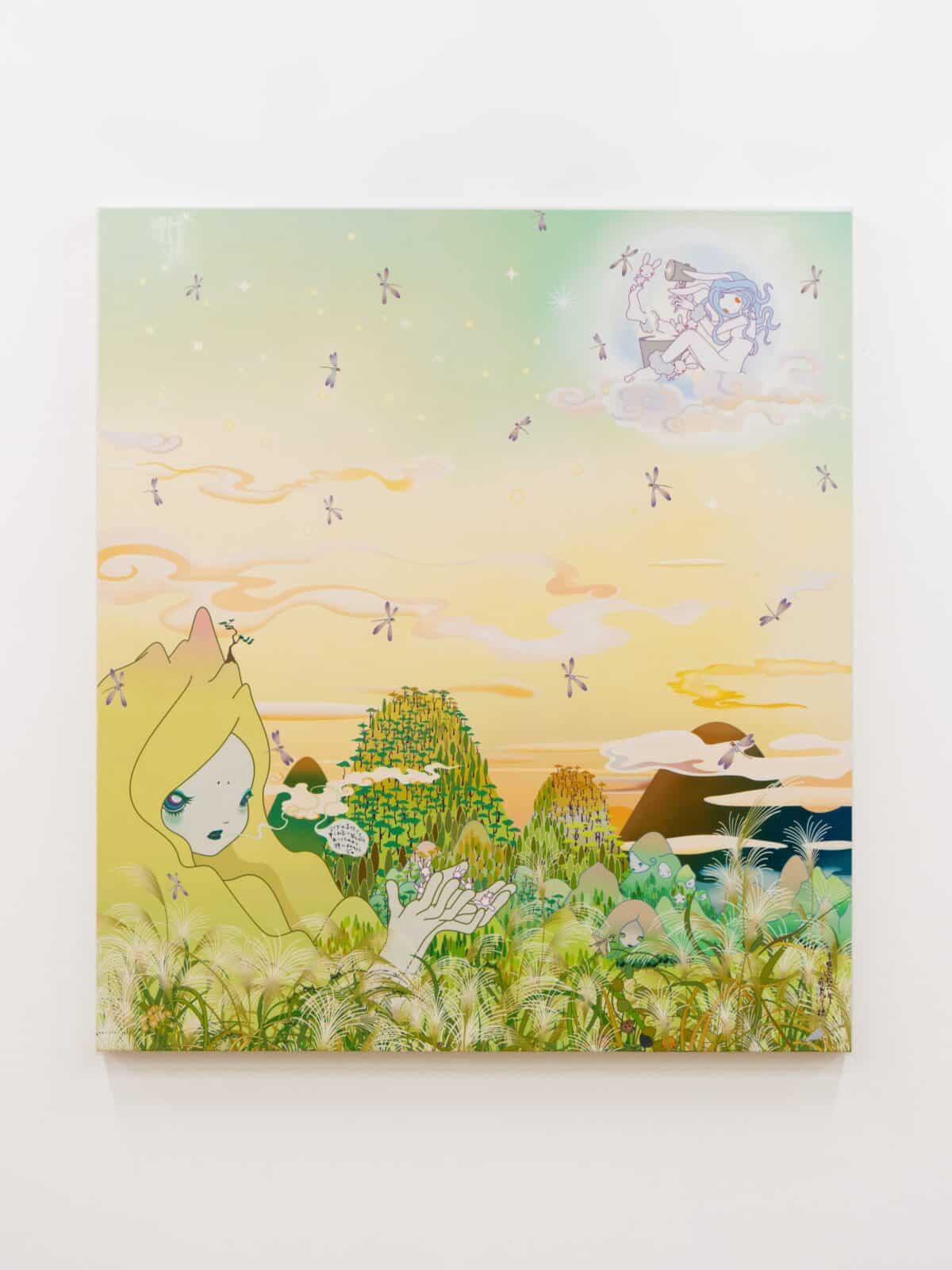
Act with Caution on a Full Moon Day!, ©2024 Chiho Aoshima/Kaikai Kiki Co., Ltd. All Rights Reserved. Courtesy Perrotin
Fräulein: It’s said that you were very shy as a little girl and found solace in drawing at the cemetery. If that is true, what was going through your mind back then, and what role did art play in your life?
Chiho Aoshima: As a child, I separated the drawings I would show people from those I wouldn’t show anyone. I would draw many weird things and throw them away once I was done. I was very happy drawing them, and I could go on forever. In reality, I had no choice but to live a conventional life, and I began to feel that I had no friends who understood me. I needed time to vent about things that interested me and not be the person my parents and friends saw me as. It wasn’t until I was an adult that I started going to cemeteries. I had a hard time socializing and spent time in cemeteries because I sometimes wanted to be alone.
There is also an anecdote about your embarrassment when your parents found your first drawings because you felt so different from other children. You said: “I wanted to be just like other people. I wanted to be ordinary.” Has this wish changed over the course of your life?
I was really embarrassed when my parents found out, but surprisingly, they did not care very much. When I entered junior high school, I decided to no longer draw secret pictures. All the girls around me were cute and cheerful and seemed to enjoy talking with boys, and I thought I had to be like them. I hardly have any memories from junior high and high school, but I struggled to be someone I wasn’t.
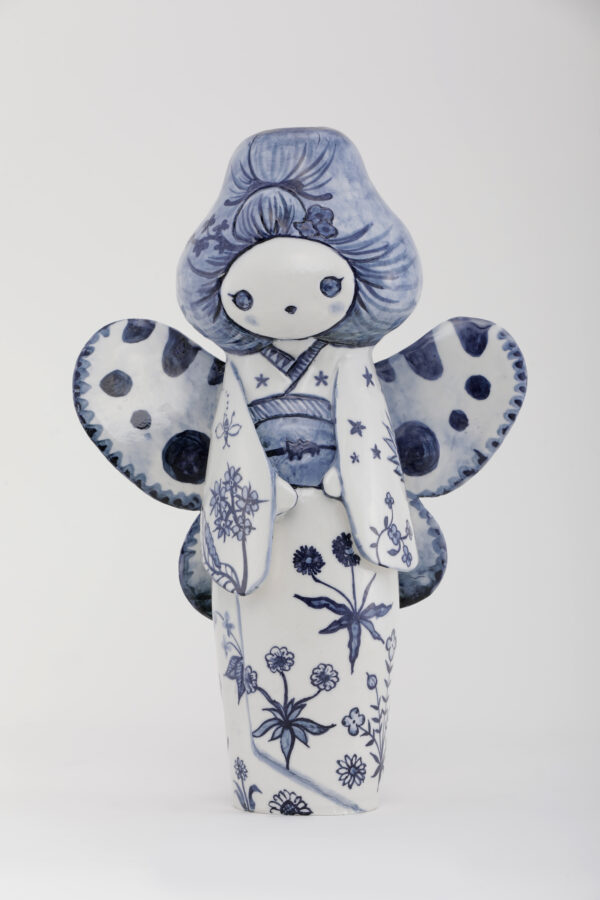
Butterfly Maiko: Miss Dandelion, 2022, ©2022 Chiho Aoshima/Kaikai Kiki Co., Ltd. All Rights Reserved. Courtesy Perrotin
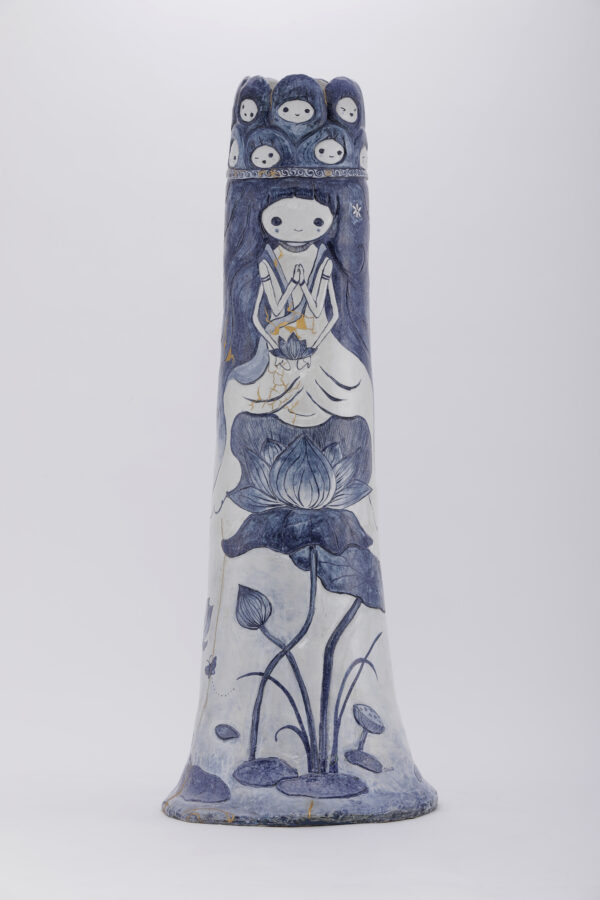
I Hope Something Good Happens, 2022, ©2022 Chiho Aoshima/Kaikai Kiki Co., Ltd. All Rights Reserved. Courtesy Perrotin
But you didn’t let that show for a long time and even studied economics at first. How strong was the pressure in your life to follow a traditional path, and how did you break free from it?
I became a normal university student, hanging out with friends and joining the tennis club, but I soon reached my limit. I realized I couldn’t pretend to be someone I wasn’t anymore.
You are a self-taught artist, but what was the starting point of your career as such? And how did it feel to finally enter the Japanese art world, especially as a young woman?
I started working part-time at an advertising agency, where I made friends with young designers. I was struck by the fact that people my age were responsible for important work. They taught me how to use Adobe Illustrator on Mac, and I began to draw, releasing the feelings I had sealed away as a child.
You are a member of the Japanese art collective Kaikai Kiki. How would you describe your shared vision?
I have known Mr. Murakami and Aya Takano for a long time and have always studied their work, so I feel a deep connection with them. All of the other Kaikai Kiki artists are also my friends, and I feel that they are all people with beautiful souls.
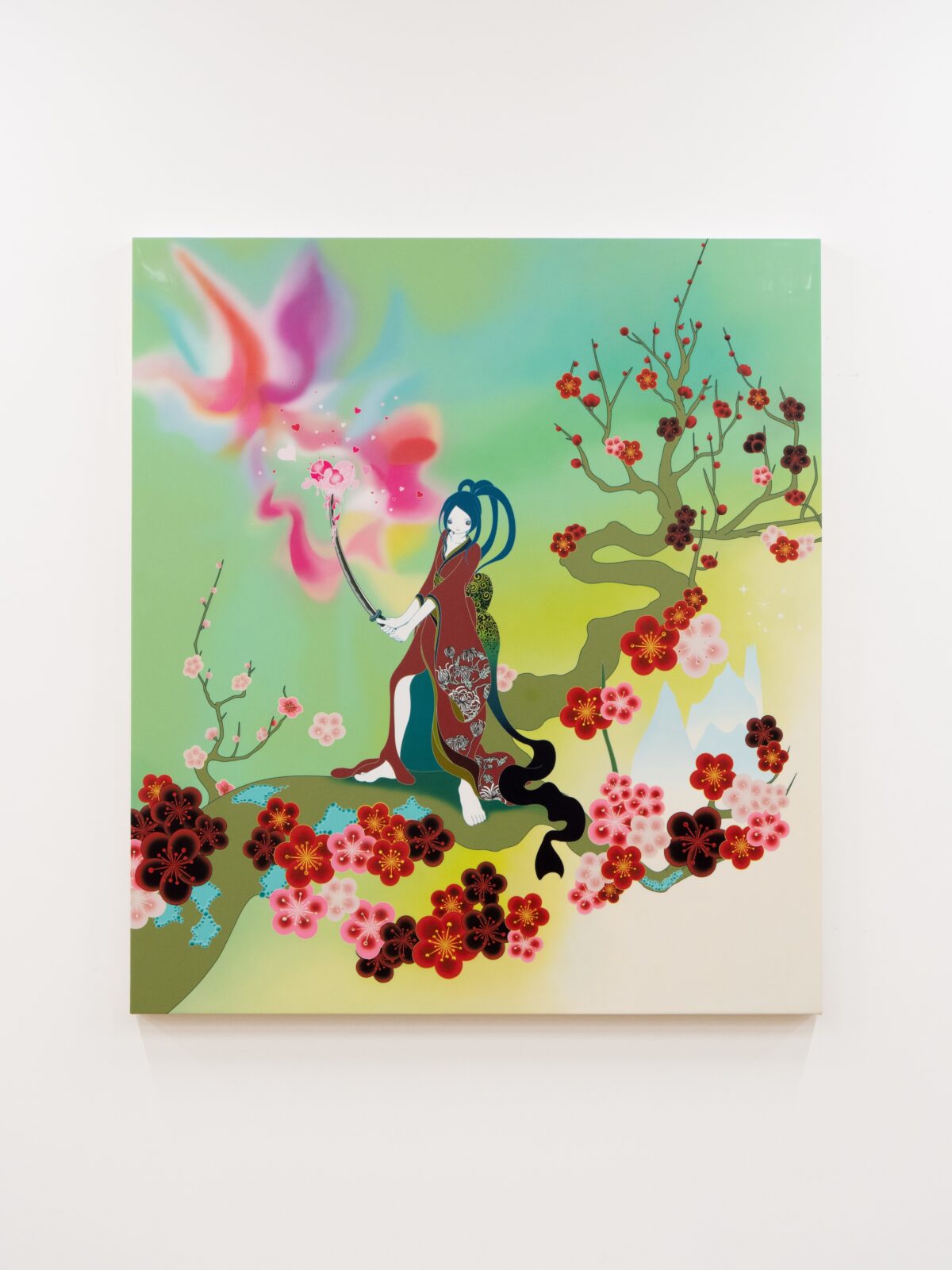
Piercing a Heart, 2024, ©2024 Chiho Aoshima/Kaikai Kiki Co., Ltd. All Rights Reserved. Courtesy Perrotin
Your work is an example of the Superflat style, which emerged from Kaikai Kiki. It combines visual elements from various sources and does not distinguish between high and pop culture or tradition and futurism. The paintings are a fusion of contrasts that still make sense.
I definitely think that old things are beautiful, but I also like to see new things interacting with them. It’s interesting. I find it is a natural form of human creation.
Your work also reflects Japanese culture and society. How would you describe it currently? What progress and challenges do you see?
I live in Kyoto now. The city is very beautiful, and there are many sensible people. However, many people are too self-conscious, myself included. When I go abroad, the atmosphere is very liberating, and the people are cheerful and sociable, which makes even me happy. But, in the end, I think that Japanese people should value their “Japaneseness.”
“I needed time to vent about things that interested me and not be the person my parents and friends saw me as.“
Your artwork combines cuteness with darkness. What is the inspiration behind this combination, and what emotions do you intend to elicit in your audience?
When I was younger, I used to express dark feelings directly in my works, but these days, the darker feelings are expressed more subtly. Darkness is always present within me. My works are my feelings themselves.
Your works mainly feature female figures. What is your relationship with them? How do you want them to be seen?
I only draw girls as an extension of my childhood doodles, but what I want to express is human beings themselves.
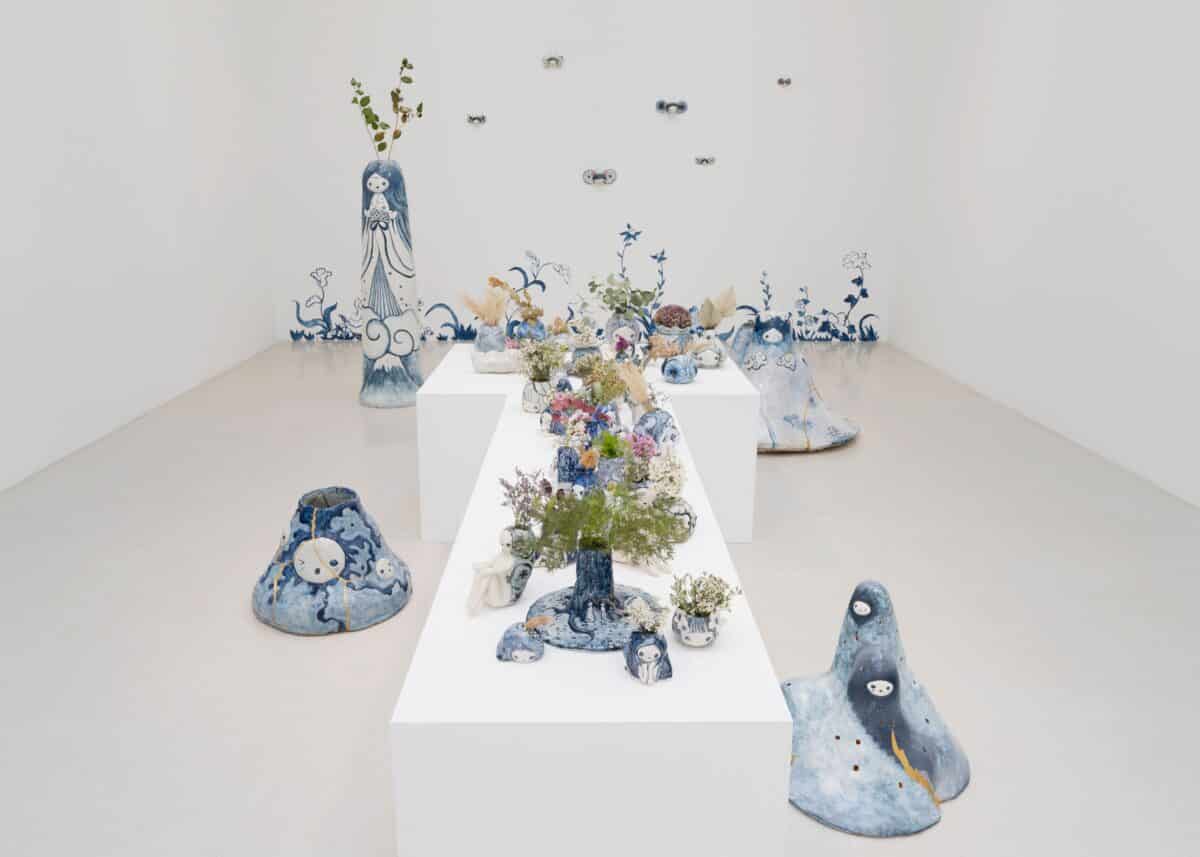
View of 'Emptinesses', a solo exhibition by Chiho Aoshima at Perrotin Paris, 2024. Photo: Claire Dorn. ©2024 Chiho Aoshima/Kaikai Kiki Co., Ltd. All Rights Reserved. Courtesy Perrotin
Nature and the relationship between humans and nature are central to your work. In some works, you dream of a planet-friendly utopia. How would that look to you, and how could it be translated into reality?
In a utopia, humans intermingle with nature, and even when exposed to rain and wind, they don’t feel cold or suffering. I don’t think humans can ever be like that. It is a wish for humans to be one with nature.
What should art ideally achieve for individuals and society?
The feeling of standing in front of a particular work of art, looking at it, and being completely transformed into a new person; that’s what art represents for me.
Interview by Ann-Kathrin Riedl